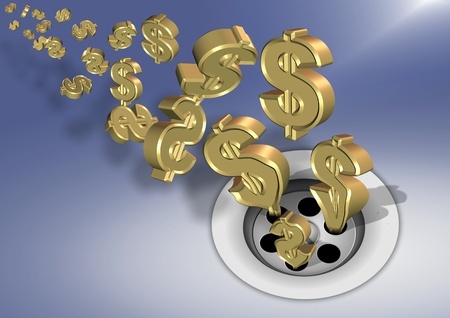Today we're going to be talking about how to pay yourself in a single member LLC. I am the founder of Hawthorn Law and we work with online businesses to help them protect your legal butts and legal assets. But today, I want to talk to you about single member LLCs and how to pay yourself.
What is a Single Member LLC?
I posted a video about the risks of forming an LLC, specifically a single member LLC, and the different things you need to be aware of if you're doing that. Because so many of you that are starting out as bloggers, as doing e-commerce businesses, you maybe are freelancers, photographers, whatever you might be, you are basically forming single member LLCs.
I've talked to a lot of you and that's basically the default entity of choice. Another alternative, which I'm going to talk about in the next blog is obviously an S corp. For now, we want to talk about single member LLCs, because that does represent so many of you out there. The biggest question that a lot of people ask is how exactly do you pay yourself with a single member LLC? It's a completely legitimate, valid question that I want to help you with today. So here's what you do. Let me show you.
Things to Consider When Paying Yourself in a Single Member LLC
You fill out a check and then you write it to yourself however much you want to pay yourself. That's how you pay yourself in a single member LLC. I'm kind of being a little corny here and I'm not meaning to be condescending, but it really is that simple in practicality. In reality, it's not that simple because there's a lot of different things that you need to consider when you're paying yourself in a single member LLC. You have to consider what your expenses are in the business and making sure that the business is capitalized enough to pay those expenses. You have to consider what your taxes are going to be at the end of the year when you pay yourself in a single member LLC. Because all the income that you get in a single member LLC, that goes in after you take out all the taxes, whatever's left over, that pot you have at the end of the day, that's what you're going to get taxed on.
Profit First Method
Now, I like to follow a method by Mike Michalowicz. It's called profit first. Basically what Mike says to do is to pay yourself two days a month. So you pay yourself on the 10th and on the 25th. Me personally, I kind of do distributions throughout the month. I'm actually not a single member LLC. I'm an S corporation. But I'll talk to you about what I do here in just a minute. The way the profit first methodology is basically every time you get money in on the 10th and on the 25th, that's when you pay your bills and you calculate a certain percentage of that income that's going to go towards paying yourself. A certain percentage that's going to go into a separate tax account. A certain percentage that's to be for owner's profit. And a certain percentage that's going to go towards your expenses. As you start to do this more and more, you're going to figure out what percentages you're going to need to put into those different accounts.
How to Manage Your Accounts
And he actually advocates, and I recommend doing this I've done this for myself, setting up four different accounts for this. So the way I've got it right now is all my money when it comes in, it goes into my operating expenses account and that's where the money will stay. Now I have some money that comes out automatically through different subscriptions I have and things of that sort, but that's where the money is. Whenever I need to pay myself, I will go in and look and see how much money was made between when I last paid myself and the day that I'm going to pay myself next. Usually it's about once a week on Fridays. And I look at that, I'll take a certain percentage of that as the money that I'm going to pay myself. And it's usually about 50%. I will take a percentage that is going to go into the owner's profit account, which is basically like a savings account that just keeps growing and growing and growing. And a certain percentage that's going to go into a tax account.
Now, the thing that you need to know about the tax account is people think, “Oh, I'm going to get taxed 20, 30% or whatever it's going to be at the end of the year.” It's not on your gross income. It's on your net income. You're only really getting taxed on your expenses. So if you're holding back, let's say 30 or 40% for your expenses, you don't need to withhold 20% of your total gross income. You only need to withhold 20% of maybe the 30% that you're allocating for your expenses. And if you do the math there, I'm not sure what it comes out to, but basically it's a much lower percent. So I'm withholding usually anywhere from 3 to 6% for taxes.
Another thing I'll say that I do here is with an S corporation, you need to pay yourself a reasonable salary. So at the end of the month, my distribution is I'm a much bigger distribution. And I use some of that money that's been accumulated over the month in my owner's pay account, and then I pay myself at the end of the month what is considered a reasonable salary. And again, that's something we can talk about on another blog. That's really only if you're an S corporation.
Related Resource: Here is the resource we recommend for payroll. (affiliate link)
Consider Forming an S-corporation for your Business
That's really what you need to do. When you write this check to yourself, you're just going to code that as a member distribution, shareholder distribution, whatever you want. When you start earning net income of probably 35 to $50,000 or more, then you really want to start thinking about electing S corporation status or actually forming an S corporation for your business. And the reason for that is with an S corporation, you're paying self-employment taxes on the amount that you take out as a salary. You do not pay self-employment taxes on the amount that you take out as your distribution and you don't actually need to take a distribution. It's just whatever money is cut shows up as your net income is the money that you're going to get taxed on, on your income tax level.
With an S corporation, the self-employment tax doesn't come into play. With an LLC, you might never take a distribution from your business, but all that income from the LLC is going to flow through to your tax returns. And you're going to get hit with a 15% self-employment tax on all of that. That's why I say once you're making 35 to $50,000 net income a year, you really want to consider S corporation status.
So that's what I got for you today. Feel free to comment and let me know if you've got any questions. I'm happy to talk to you about these issues. Love talking about single member LLCs and how they can help you and your business.



